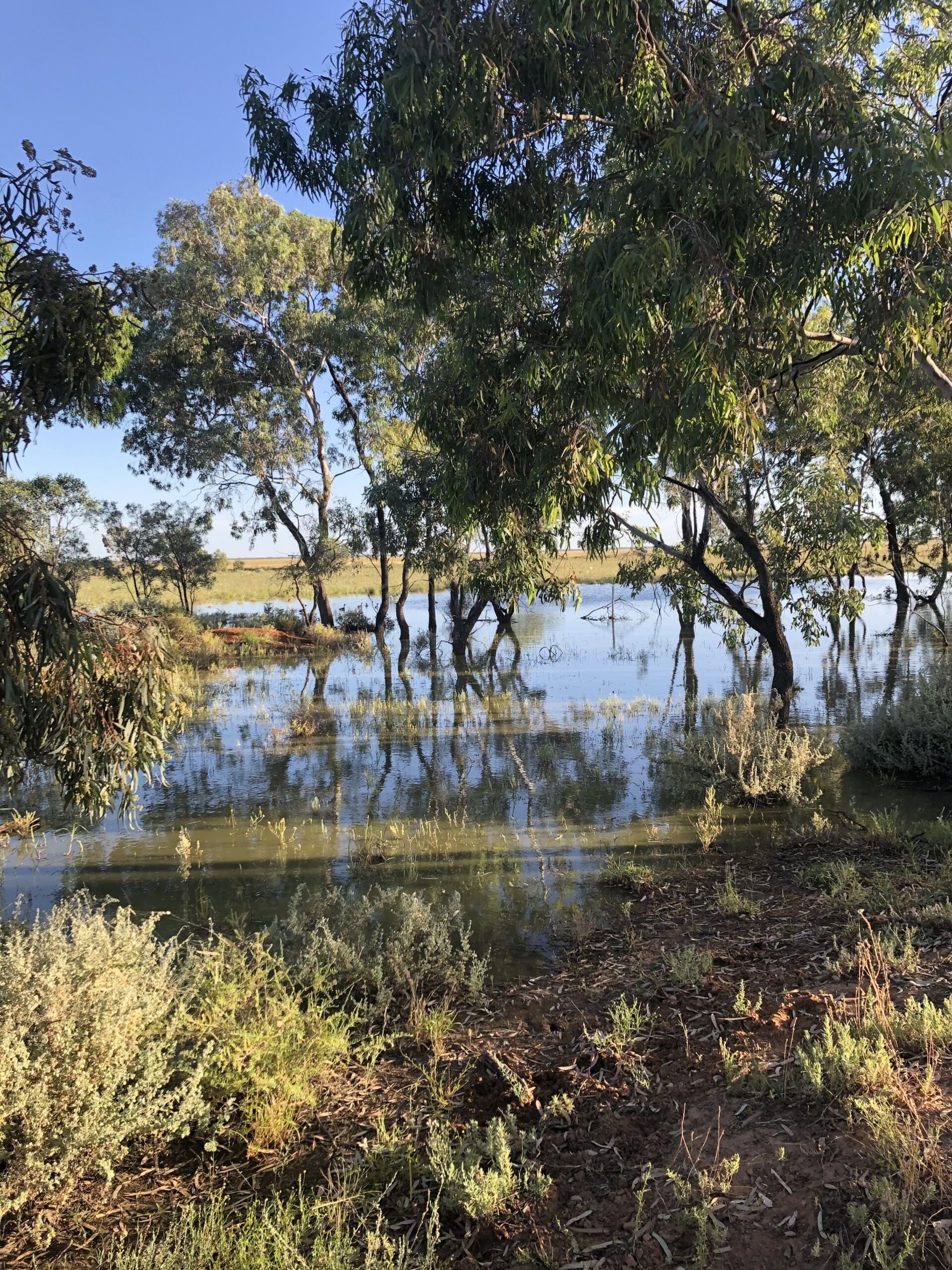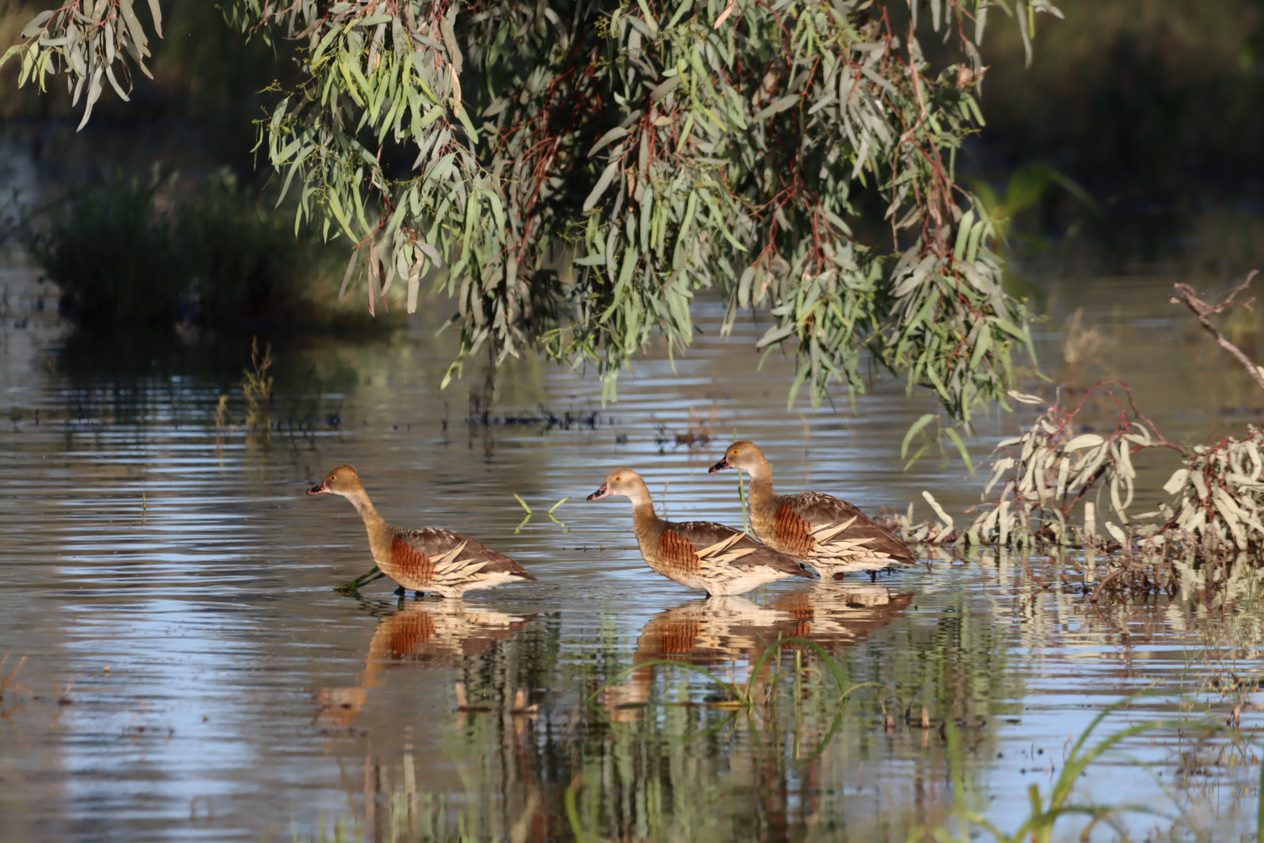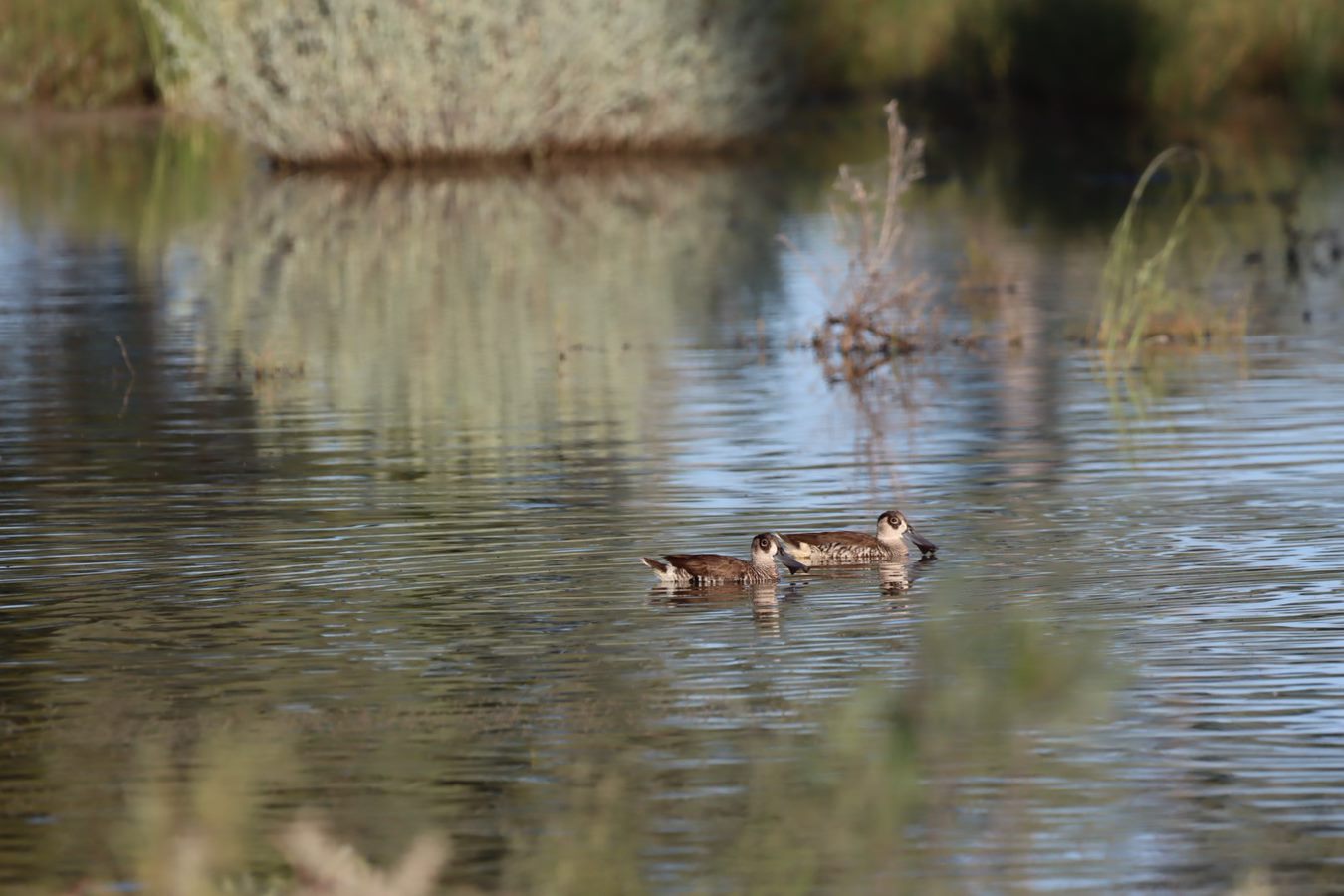Traditional Paakantyi Language of the Kurnu-Baakandji nation used in this article. (L. A. Hercus – Paakantyi Dictionary).
The Commonwealth Environmental Water Holder’s (CEWH) Science Program funds the Flow Monitoring, Evaluation and Research (Flow–MER).
Written by Jared Reid.

The 2021-22 water year (July 1 – June 30) was the wettest in the Murray-Darling Basin (the Basin) for a decade. In Toorale National Park (Toorale) this meant relatively wet conditions with flooding flows from both the Darling-Baaka and Warriku (Warrego) Rivers. Commonwealth water for the environment was used to augment natural events, increase inundation duration and improve the environmental health of the system. Upstream rainfall in late 2022 contributed to a flow pulse through the Warriku River which contained 6% water for the environment. Peak inundation of the Warriku River channel and Western
Floodplain occurred on 6 December 2022 (9,119 ha of floodplain inundation), which was the largest extent since April 2020.
Following the large inundation event Flow-MER scientists Jared Reid and Emeritus Professor Nick Reid undertook a waterbird survey. Many parts of the floodplain were still wet, providing great habitat for waterbirds (Figure 1). Waterbirds surveyed included dabbling and filter feeding ducks, piscivores, large wading birds, and reed-inhabiting passerines. Many of the duck species were breeding.

At sunrise each day, behind the old irrigation quarters a diverse array of yurli (ducks) were observed loafing, feeding and preening in pools. Wilpa-thiru (plumed-whistling ducks; Dendrocygna eytoni; Figure 2), kulthapa (grey teal; Anas gracilis), kunarli (Australian wood ducks; Chenonetta jubata), kalku (Eurasian coots; Fulica atra), manpara (Pacific black duck: Anas superciliosa) and pink-eared ducks (Malacorhynchus membranaceus; Figure 3) rested on
the water or in adjacent vegetation and black-tailed native hens (Tribonyx ventralis) waded in the shallows as other waterbird species flew overhead. A flock of thiyara (red-tailed black cockatoos; Calyptorhynchus banksii) with their mournful calls roosted in the kumparla (coolabah; Eucalyptus coolabah) and kurkuru (black box; E. largiflorens) woodland each afternoon.

The copious and healthy wetlands provided for an abundance of waterbirds and other birds, particularly brown songlarks (Megalurus cruralis) and tree and fairy martins (Petrochelidon sp.).
What is abundance? In ecology, abundance refers to the total number of individuals
of a species (e.g., pink-eared ducks) or group of species (e.g., dabbling and filter feeding ducks) in a given area, habitat type or ecosystem. In this case we are referring to the abundance of birds overall (i.e., both waterbirds and ‘terrestrial’ birds).
Managing water for the environment is a collective and collaborative effort, working in partnership with communities, private landholders, scientists and government agencies – these contributions are gratefully acknowledged.
We acknowledge the Traditional Owners of the land on which we live, work and play. We also pay our respects to Elders past, present and emerging.


